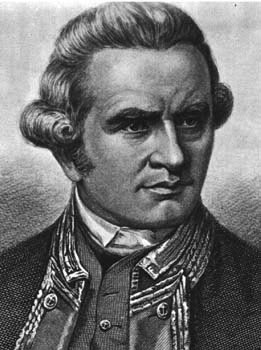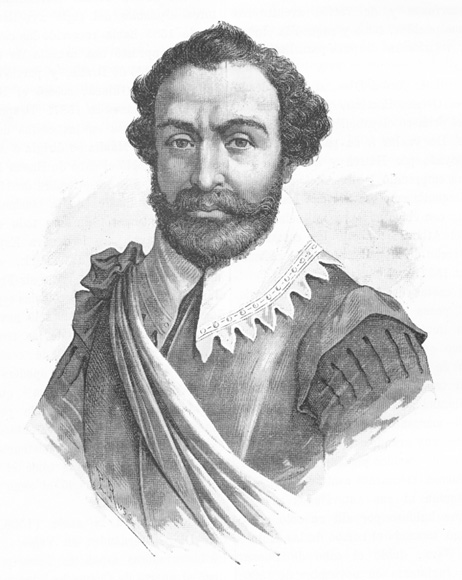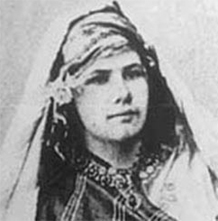
Afonso de Albuquerque (14??-1515)
was a Portuguese soldier and explorer who sailed to the Spice Islands (the Moluccas, a group of Islands in Indonesia) in 1507-1511, trying to monopolize trade with this area; from Europe, he sailed around Africa to the Indian Ocean. He was appointed the Viceroy of India by King Emmanuel in 1509. He forcibly destroyed the Indian city of Calicut in January, 1510, and took Goa (in southern India) in March, 1510, claiming Goa for Portugal.
 BATTUTA, ABU ABDULLAH IBN
BATTUTA, ABU ABDULLAH IBNAbu Abdullah Muhammad Ibn Battuta [also spelled Buttuta] (1303-1365), was a Moroccan explorer who traveled through Africa, the Middle East, and parts of the Far East. A Muslim, he set off on a Hajj (a pilgrimage to the holy town of Mecca) from Tangier, Africa, in 1325 and traveled for almost three decades, covering over 75,000 miles (120,700 km) by boat and over land. He did sail his own boat, but was a passenger on many trading boats. In India, Buttuta was appointed a Magistrate of Delhi (1334-1341). He also traveled to China, Sri Lanka, Sumatra, and much of Africa. Buttuta later recorded his adventures in a popular book, "Travels (Rihala) of Ibn Battuta." He died in Fez, Morocco, in 1365.

BEHAIM, MARTIN
Martin Behaim (1459-1537) was a German mapmaker, navigator, and merchant. Behaim made the earliest globe, called the "Nürnberg Terrestrial Globe". It was made during the years 1490-1492; the painter Georg Glockendon helped in the project. Behaim had previously sailed to Portugal as a merchant (in 1480). He had advised King John II on matters concerning navigation. He accompanied the Portuguese explorer Diogo Cam (Cão) on a 1485-1486 voyage to the coast of West Africa; during this trip, the mouth of the Congo River was discovered.
After returning to Nürnberg in 1490, Behaim began construction of his globe (which was very inaccurate as compared to other maps from that time, even in the areas in which Behaim had sailed).
It was once thought that Behaim's might may have influenced Columbus and Magellan; this is now discounted. Behaim may have also developed an astrolabe. Behaim's globe is now in the German National Museum in Nürnberg.
BURTON, RICHARD F.
Sir Richard Francis Burton (1821-1890) was an English explorer, linguist, author, and soldier. He was the first European to see many Muslim cities and Lake Tanganyika; he wrote voluminously about his trips.
CABRAL, PEDRO ALVARES
Pedro Álvares Cabral (1467-1520) was a Portuguese nobleman, explorer, and navigator who discovered Brazil on April 22,1500. His patron was King Manuel I of Portugal, who sent him on an expedition to India. Cabral's 13 ships left on March 9, 1500, following the route of Vasco da Gama. On April 22,1500, he sighted land (Brazil), claiming it for Portugal and naming it the "Island of the True Cross." King Manuel later renamed this land Holy Cross; it was later renamed Brazil, after a kind of dyewood found there, called pau-brasil. Cabral stayed in Brazil for 10 days and then continued on his way to India, in a trip fraught with shipwrecks (at the Cape of Good Hope), and fighting (with Muslim traders in India). After trading for spices in India, Cabral returned to Portugal on June 23, 1501, with only four of the original 13 ships. After this journey, King Manuel appointed Vasco da Gama to head the next expedition, and Cabral retired.
CADAMOSTO, ALVISE DA
Alvise da Cadamosto (1432?-1511?) was a Venetian (from Venice, Italy) navigator and merchant who sailed for Prince Henry of Portugal.
In 1455, Prince Henry sent the Cadamosto on two expeditions. On the first, in 1455, Cadamosto reached the mouth of the Gambia River (in west Africa). On the second, in 1456, Cadamosto sailed up the Gambia river to the Geba River. He tried trading with the Africans but was unsuccessful. Cadamosto claimed to have discovered the Cape Verde Islands, but this is uncertain. 
James Cook (October 27, 1728- February 14, 1779) was a British explorer and astronomer who went on many expeditions to the Pacific Ocean, Antarctic, Arctic, and around the world.
Cook's first journey was from 1768 to 1771, when he sailed to Tahiti in order to observe Venus as it passed between the Earth and the Sun (in order to try to determine the distance between the Earth and the Sun). During this expedition, he also mapped New Zealand and eastern Australia.
Cook's second expedition (1772-1775) took him to Antarctica and to Easter Island.
Cook's last expedition (1776-1779) was a search for a Northwest Passage across North America to Asia. Cook was killed by a mob on Feb. 14, 1779, on the Sandwich Islands (Hawaii). At the time, he was trying to take the local chief hostage to get the natives to return a sailboat they had stolen.
Cook was the first ship's captain to stop the disease scurvy (now known to be caused by a lack of vitamin C) among sailors by providing them with fresh fruits. Before this, scurvy had killed or incapacitated many sailors on long trips.
DA GAMA, VASCO
Vasco da Gama (1460-1524) was a Portuguese explorer who discovered an ocean route from Portugal to the East.
Da Gama sailed from Lisbon, Portugal, around Africa's Cape of Good Hope, to India (and back) in 1497-1499. At that time, many people thought that this was impossible to do because it was assumed that the Indian Ocean was not connected to any other seas.
Da Gama's patron was King Manuel I of Portugal, who sent da Gama, then an Admiral, on another expedition to India (1502-1503). After King Manuel's death, King John III sent da Gama to India as a Portuguese viceroy (the King's representative in India). Da Gama died in India in 1524.
DIAS, BARTOLOMEU
Bartolomeu Dias (1457-1500) was a great Portuguese navigator and explorer who explored Africa's coast. In 1488, Dias led the first European expedition to sail around Africa's Cape of Good Hope, leaving Tagus, Portugal in 1487. This breakthrough of circumnavigating the Cape of Good Hope opened up lucrative trading routes from Europe to Asia. Dias may have originally called the southern tip of Africa the "Cape of Storms"; it was later renamed the Cape of Good Hope. On a later expedition (in 1500, with Pedro Álvares Cabral), Dias sailed near South America on the way to Africa, and spotted land at Espírito Santo in Brazil, calling it the "Land of the True Cross." Although they thought it to be an island, Dias was still among the first Europeans to see Brazil. Dias died during this expedition; he was lost at sea near the Cape of Good Hope in 1500.
DIAS, DIOGODiogo Dias was a Portuguese navigator (and brother of Bartolomeu Dias) who was the first European to sail to Madagascar, an island off the southeastern coast of Africa. Diogo Dias landed in Madagascar in 1500, and named it the Isle of St. Lawrence. His ship had been on an expedition with Pedro Álvares Cabral and Bartolomeu Dias, but Diogo Dias' ship became separated from the others at the Cape of Good Hope, and then came upon Madagasacar. He then returned to Portugal.
 DRAKE, FRANCIS
DRAKE, FRANCISSir Francis Drake (1545-1596) was a British explorer, slave-trader, privateer (a pirate working for a government) in the service of England, mayor of Plymouth, England, and naval officer (he was an Admiral). Drake led the second expedition to sail around the world in a voyage lasting from 1577 to 1580 (Magellan led the first voyage around the world).
EANNES, GIL
Gil Eannes (15th century) was a Portuguese explorer (sailing for Prince Henry) who was the first person to sail beyond the dreaded Cape Bojador and return. Cape Bojador is on the coast of Africa just below latitude 27° North (off the western Sahara Desert). This feat was amazing because Cape Bojador had frequent, violent storms and strong currents. Mariners told legends of a "Green Sea of Darkness" beyond this cape, from which there was no return. Eannes' journey in 1434 opened the African coast to navigators, and, soon, many Europeans were exploring the coast of Africa and beyond.

EBERHARDT, ISABELLA
Isabelle Eberhardt (Feb. 17, 1877 - October 21, 1904) was an explorer who lived and traveled extensively in North Africa.
HANNU
Hannu was an ancient Egyptian explorer; he made the first recorded exploring expedition. Hennu is said to have sailed down the Red Sea to explore the southeastern areas of the Arabian peninsula (called Punt) around 2750 B.C (during Egypt's 2nd dynasty). He sailed to what is now part of eastern Ethiopia and Somalia. He returned to Egypt with treasures, including myrrh (a spice) and precious metals. Hannu wrote of his exploration in stone. (Hannu is sometimes called Hennu, which is also the name of a sacred boat of Egyptian gods).

HENRY THE NAVIGATOR
Prince Henry (Henrique) the Navigator (1394-1460) was a Portuguese royal prince, soldier, and patron of explorers. Henry sent many sailing expeditions down Africa's west coast, but did not go on them himself. Thanks to Prince Henry's patronage, Portuguese ships sailed to the Madeira Islands (1420), rounded Cape Bojador (Eannes, 1434), sailed to Cape Blanc (1441), sailed around Cap Vert (1455), and went as far as the Gambia River (Cadamosto, 1456) and Cape Palmas (Gomes, 1459-1460).

KINGSLEY, MARY
Mary Henrietta Kingsley (1862-1900) was a British explorer who made two pioneering trips to West and Central Africa. She was the first European to enter remote parts of Gabon.

LANDER, RICHARD LEMON
Richard Lemon Lander (1804-1834) was an English explorer who made three trips to West Africa; he and his brother John were the first Europeans to canoe down the lower Niger River to its delta (where it meets the sea).

LIVINGSTONE, DAVID
David Livingstone (1813-1873) was a British missionary and explorer who explored the interior of Africa. He arrived as a missionary in Africa in 1841, but began to explore the land in 1853. For over two decades he traveled over land, walking across the continent, and exploring the Zambezi River. He searched for the source of the Nile River. Livingstone was the first European to see the enormous Victoria Falls. Livingstone was thought to be dead (because of rumors started by deserters of his expedition), but the American reporter Henry M. Stanley was sent to Africa to find Livingstone. Stanley found him (1872) and brought him needed food and medicine, then left to recount the tale to readers. Livingstone died a year later in Africa; his heart was buried there, but his body was buried in Westminster Abbey, London, England, after an 8-month journey.

MAGELLAN, FERDINAND
Ferdinand Magellan (1480-1521) was a Portuguese explorer who led the first expedition that sailed around the Earth (1519-1522). Magellan also named the Pacific Ocean (the name means that it is a calm, peaceful ocean).

PARK, MUNGO
Mungo Park (1771-1806) was a Scottish explorer and surgeon who charted the course of the Niger River, in western Africa. Park began at the mouth of the Gambia River on June 21, 1795, and traveled northeast on horseback and by foot over rough country. He reached the Niger River at Ségou (which is now in Mali). Park travelled hundreds of miles, suffering fever and imprisonment along the way. He wrote of his trip in "Travels in the Interior Districts of Africa" (1797). At the request of the Scottish government, Park went on a second expedition in 1805 to find the source of the Niger River. During this unsuccessful mission, Park and his expedition members were attacked at the rapids of Bussa, where Park drowned.




No comments:
Post a Comment